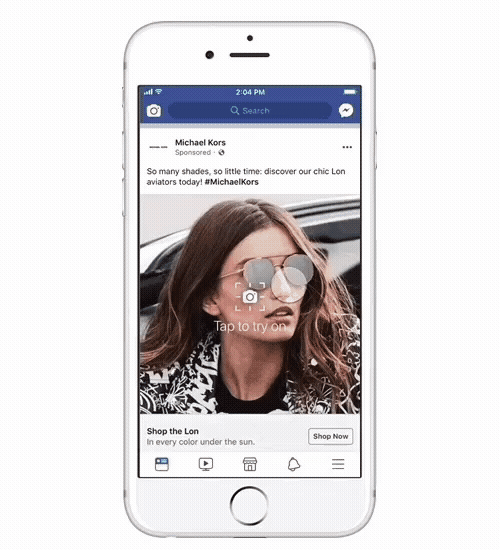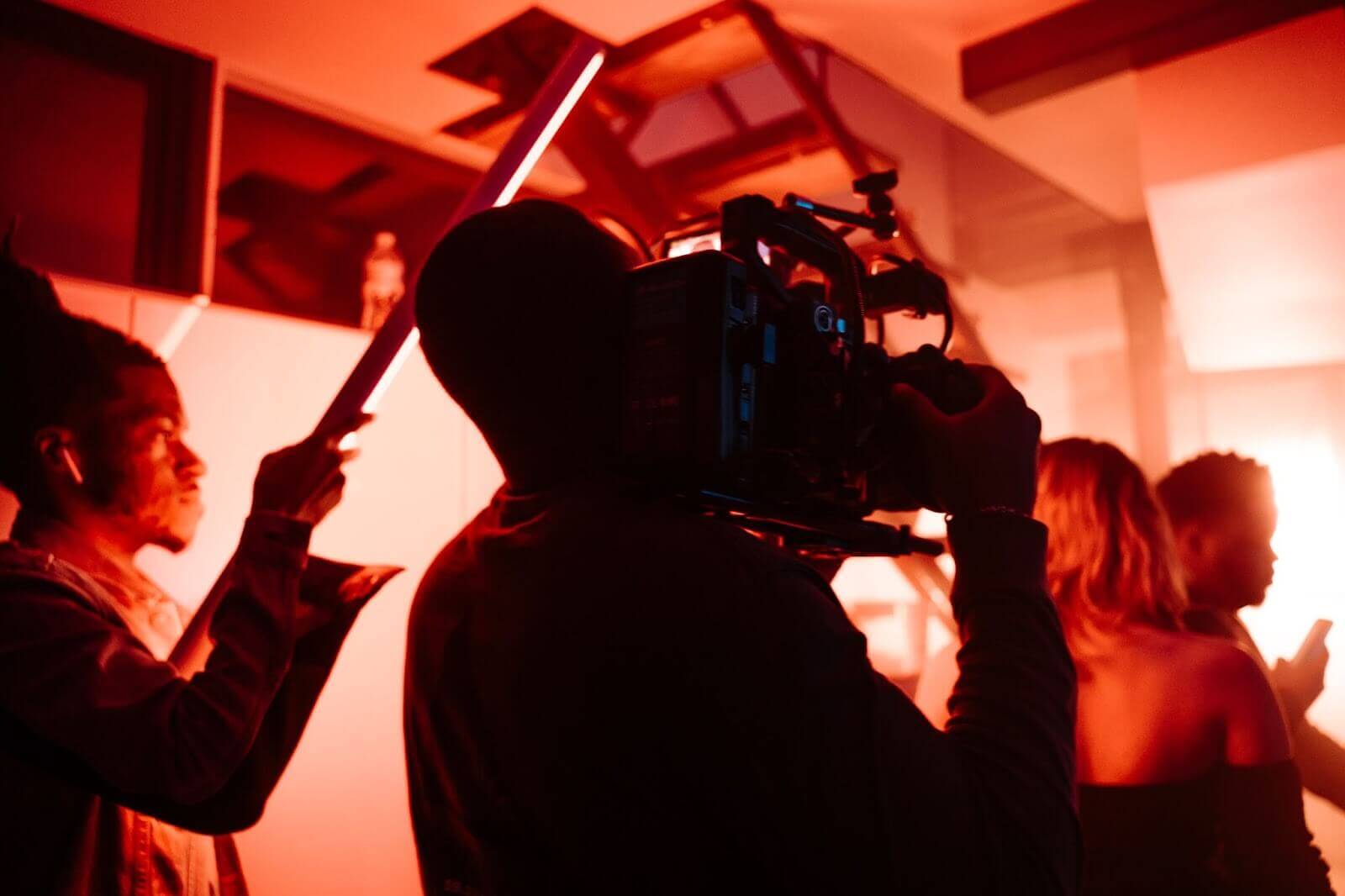Immersive technologies like virtual reality (VR), augmented reality (AR) and mixed reality (MR) are no longer a thing of the future.
They’re already here.
Overall spending on AR and VR headsets, software and services, including consumer purchases, soared to $12 billion globally in 2020—a staggering 50% increase from 2019.
And you don’t have to be a global tech giant to get in on the action.
Today, these types of cutting-edge technologies—also known under the collective term of extended reality (XR)—can be used by any business, in any industry. Not only does XR serve as an indispensable training tool for employees in the manufacturing, operations and medical fields, it can also be an incredibly valuable marketing tool for B2C brands looking to gain a competitive edge in the market.
What’s more, XR performs 4X better than video on mobile. So if you’re searching for a way to give mobile users a high-value experience that keeps their attention, it may be time to get familiar with some form of XR technology.
Whether you want to bolster your experiential marketing strategy or improve the quality of your internal onboarding processes and training experience—we’re about to show you how your business can make a play with VR/AR/MR technology in 2021.
But before we dive into the details, here’s a quick refresher on how to tell VR, AR and MR apart.
What’s the difference between VR, AR and MR?
VR, AR and MR are different types of immersive technology known under the collective term of extended reality (XR). Here’s how to tell them apart:
Virtual reality (VR)
VR is the most immersive technology of the three. Using a head-mounted display (HMD) or headset, this type of tech has the ability to transport you into a multi-sensory, computer-generated world where the user can interact with their virtual surroundings.
Augmented reality (AR)
Instead of creating new realities, AR adds information and objects on top of real-world environments. If you own a smartphone and have ever used Instagram or Snapchat filters, then you’ve already experienced one of the many amazing things AR can do.
Mixed reality (MR)
Where VR meets AR. MR uses high-level sensing and imaging technologies to blend the real world with digital elements, allowing you to manipulate both physical and virtual objects. Mixed reality brings all the immersiveness of VR, but instead of using haptic controllers to move virtual items, you can use your own hands and see everything you’re doing through your headset.
Benefits of XR that will give your business a competitive edge
Whether it’s augmented reality, virtual reality or a mix of both, XR can provide businesses and brands with a number of valuable benefits:
- AR/VR technology provides a richer user experience that improves consumer-brand engagement, increasing conversions by nearly 28%.
- Simulations using VR give professionals who work in high-risk industries (emergency services, military, manufacturing, oil and gas) a safe space to train with no risk.
- AR has a 70% better memory-recall than non-AR content, which can help fast-track onboarding and improve employee retention.
- Incorporating AR into your product marketing strategy as the ability to boost the perceived value of your product by 40%.
- AR will maximize your brand’s reach since it’s available on mobile and, therefore, accessible to a rapidly expanding smartphone market.
- Immersive technology facilitates remote work by allowing employees to collaborate and access data from anywhere.
5 examples of XR in action
There are many ways in which brands and organizations can incorporate XR into their digital marketing strategies and internal operations. Here are five examples of how businesses can make the most of VR/AR/MR technology.
1. Enhance the shopping experience with virtual try-ons
At the height of the pandemic, in-store shopping quickly became non-existent and the fitting room made its way to virtual. What was once a type of video marketing trend is now an indispensable tool for businesses. More consumers are using XR functions to test new products, and brands like Michael Kors are rising up to the demand with augmented reality filters like their “Try Before You Buy.”

Other early adopters include retailers like Farfetch on Snapchat, Sephora, IKEA and Wayfair who’ve been ahead of the AR game since they were already primed for a simple transition to virtual.
Whether brands care to acknowledge it or not, immersive technology like augmented reality has become essential for brick-and-mortars to bridge the gap between online and in-store touchpoints.
These other-worldly experiences are not only providing shoppers with a more personalized experience, they also have the ability to reduce time to purchase and increase conversions.
2. Provide insight and engagement by scanning objects
Scanning is an excellent tool for businesses to incorporate in their print marketing or at conferences because they add a multi-channel approach to your marketing strategy.
All the user has to do is scan the 2D AR code natively (like a QR code) and this will unlock relevant information, load a video or open some additional content they can engage with in the moment.
An example of this is AMC Theatres, which used an in-app augmented reality feature to deliver bonus content that would elevate the moviegoing experience. How? By inviting customers to scan 25 mobile-enabled movie posters with the theatre’s app, so they could either watch the movie trailer, purchase tickets or set an alert once tickets went on sale.
A simple, yet effective way to provide customers with extra digital content from a print ad.
3. Create high-value experiential activations, in-store and online
Typically, experiential activations are a live in-person interaction between a brand and its customers.
But with extended reality, businesses can bolster their on-the-ground brand activations to create a deeper, more meaningful customer experience.
Adidas does this using VR in their 2017 Adidas: Delicatessen campaign sponsored by TERREX (a division of Adidas), which follows the mountain-climbing journey of two professional athletes, Ben Rueck and Delaney Miller.

To help promote their line of outdoor sportswear and accessories, the global retail titan gave customers the opportunity to scale the mountain of Delicatessen alongside both climbers using a VR headset and two sensory remote controls.
Not only did customers get to experience the thrilling sensation of feeling like they were actually climbing, it allowed them to see the TERREX products in action at the same time.
Turn in-person activations into virtual ones
With AR, you can also bring your experiential marketing strategy to the digital space using immersive technology that will provide customers with a more dynamic and engaging full-value experience.
Take Dell for example. Forced to cancel their international conference due to COVID-19, Dell turned to augmented reality experiential marketing to build an immersive portal that would bring the interactive live experience to the virtual landscape.
Conferences are just one of the many in-person live activations that can be transformed into an immersive online experience using augmented reality. Here are a few others:
- Career fairs
- Watch parties
- Product launches
- Live demos
- Live performances
What’s more, online AR technology is accessible to everyone. Customers don’t even need to download an app to reap the benefits.
If this is your first time incorporating extended reality technology into your experiential marketing strategy, you may want to invest in an end-to-end virtual activation video service for the best results.
4. Connect and collaborate on complex visual data in real-time
Virtual and augmented reality tech isn’t just for the B2C market. In fact, XR technology is increasingly becoming a key tool in enterprises, allowing them to share complex data to help facilitate live service and support in highly-technical industries.
According to Deloitte’s latest insights report, XR enterprise applications like training and industrial maintenance were predicted to generate US$1.3 billion and US$0.4 billion in 2020.
Although these numbers are less than what we typically see in the B2C market, it’s estimated that “over the next few years, organizational purchases of XR will likely narrow the gap, with all of the fastest-growing digital reality markets expected to be in enterprise or education.”
How Porsche gets it right
Porsche is one of the key players leading the charge when it comes to applying XR to solve live problems in real-time. Using an AR goggle, Porsche technicians can contact a remote assistant from the Porsche technical support team and get live help while they make repairs.

To do this, the remote assistant sends detailed repair information that gets projected onto the technician’s goggle display. This type program has proven to be greatly beneficial to Porsche’s customer service and manufacturing processes, helping increase the detection and diagnosis of problems, as well as reducing the repair time of Porsche’s cars by up to 40%.
5. Level up the training experience with video
Conventional video formats already work wonders when it comes to training employees. But if you top up your typical product tutorials, demonstrations and training videos with an additional layer of virtual augmented reality, it can significantly increase engagement and retention.
Watching a training video for a medical procedure is one thing, but having the opportunity to put on a VR headset and perform the procedure in a virtual environment is going to:
- Speed up the learning process
- Improve the overall training experience
- Give employees confidence to perform in a live environment because they’ve already practiced in a virtual simulation
But for employees to use VR and AR training tools effectively, they first need to understand how it works. That’s when a product tutorial or training video becomes an incredibly valuable asset for a business.
Toldright is working with organizations like CareAR, a XEROX company, to help them produce video content that does just that.
The above is just one of the many how-to videos toldright created for CareAR’s real-time video library.
By producing an instructional product video showcasing their augmented reality platform, toldright was able to help CareAR connect in-person with online experiences to facilitate employee learning, increase efficiency, and enhance overall productivity for their business.
Now’s the time to get in on the XR game
Building XR content might seem overwhelming, but it’s quickly becoming easier and more accessible for businesses big and small to get in on the action. You might be surprised at how a little AR magic can elevate the look and feel of your products, streamline your operations, as well as improve your overall reputation as an innovative brand.
Toldright’s AR and VR video experts can help you professionally produce any type of immersive brand experience (even the ones mentioned in this article) using cutting-edge technology. Take your business to new heights and get in front of the competition by engaging audiences with multi-sensory worlds built for top-level entertainment today.




